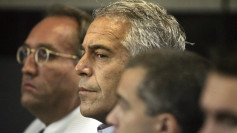In a sign of enduring resilience within the U.S. labor market, unemployment claims have fallen to their lowest level since September 2022, defying expectations amid a period of elevated interest rates designed to cool the economy. According to the latest report from the Labor Department, jobless claims dropped to 187,000 for the week ending January 13, marking a decrease of 16,000 from the previous week.
This decline in unemployment applications underscores the labor market's surprising fortitude, even as the Federal Reserve has embarked on an aggressive campaign of interest rate hikes since March 2022. These measures were aimed at addressing the high inflation rates, which had surged to four-decade highs following a robust economic rebound from the COVID-19 recession of 2020.
Despite these headwinds, the unemployment rate has remained remarkably low, staying below 4% for an unprecedented 23 consecutive months - the longest such streak since the 1960s. This trend continues to fuel optimism that the Federal Reserve might be successfully navigating a so-called soft landing, a scenario where rate hikes sufficiently temper inflation without tipping the economy into a recession.
The recent decline in weekly jobless claims is further evidence of the labor market's durability. The total figure of 187,000 is notably lower than the Dow Jones estimate of 208,000. Moreover, continuing claims, which lag a week behind the initial filings, also witnessed an unexpected decline of 26,000, dropping to 1.806 million and falling below the FactSet estimate of 1.83 million.
Robert Frick, a corporate economist at Navy Federal Credit Union, commented on the current labor dynamics, noting, "Employers may be adding fewer workers monthly, but they are holding onto the ones they have and paying higher wages given the competitive labor market."
This labor market strength is occurring alongside other mixed economic indicators. The Philadelphia Fed's manufacturing index for January, for instance, showed a slight improvement from December but remained in negative territory, indicating a contraction in the sector. Additionally, recent data on housing starts and building permits presented a mixed picture, reflecting the impact of high interest rates on the housing market.
Despite these challenges, there are signs that the labor market cooling is more subtle than abrupt. The Fed's Beige Book report noted a "cooling labor market" with lower wage pressures, but overall economic activity showed "little or no change" since late November. This balance suggests that while the labor market is responding to the Fed's policy adjustments, it is doing so in a gradual and manageable manner.
The combination of decelerating inflation, stable employment figures, and the Fed's cautious approach to interest rate hikes has contributed to a cautiously optimistic outlook for the U.S. economy. As the Federal Reserve continues to monitor these developments, its future policy decisions will be critical in maintaining this delicate balance between inflation control and economic growth.
In summary, the latest drop in unemployment claims, coupled with other economic data, paints a picture of a resilient labor market that has managed to withstand the pressures of rising interest rates and economic uncertainty. This resilience bodes well for the U.S. economy as it navigates the challenges of inflation and interest rate normalization in the coming months.






